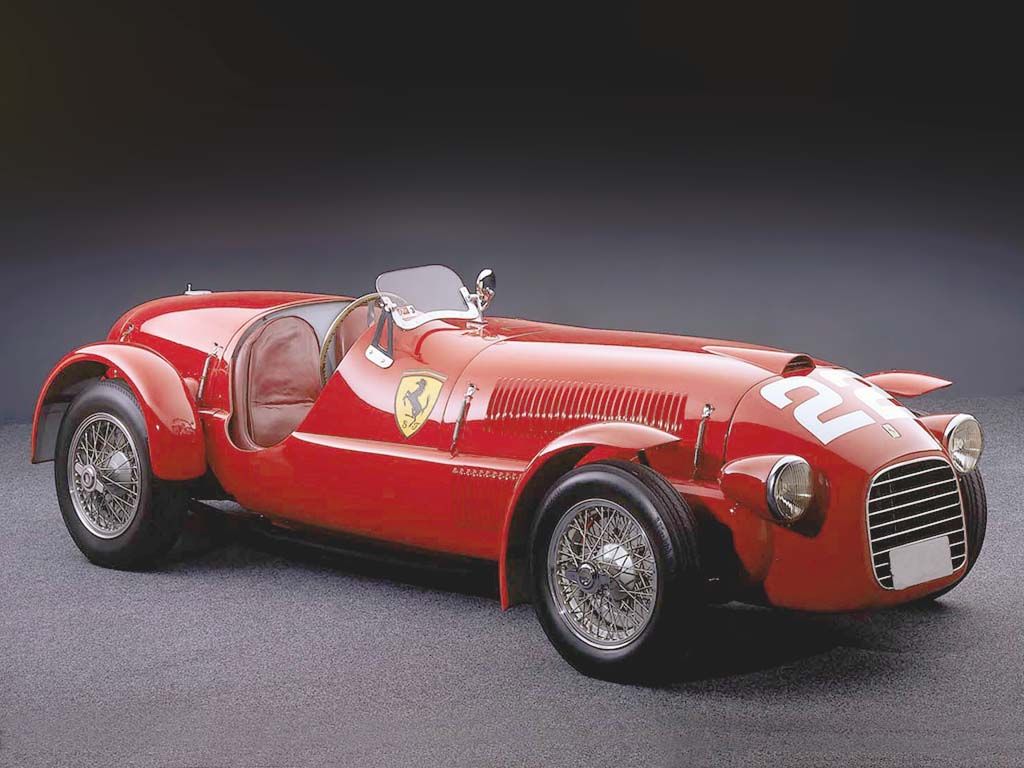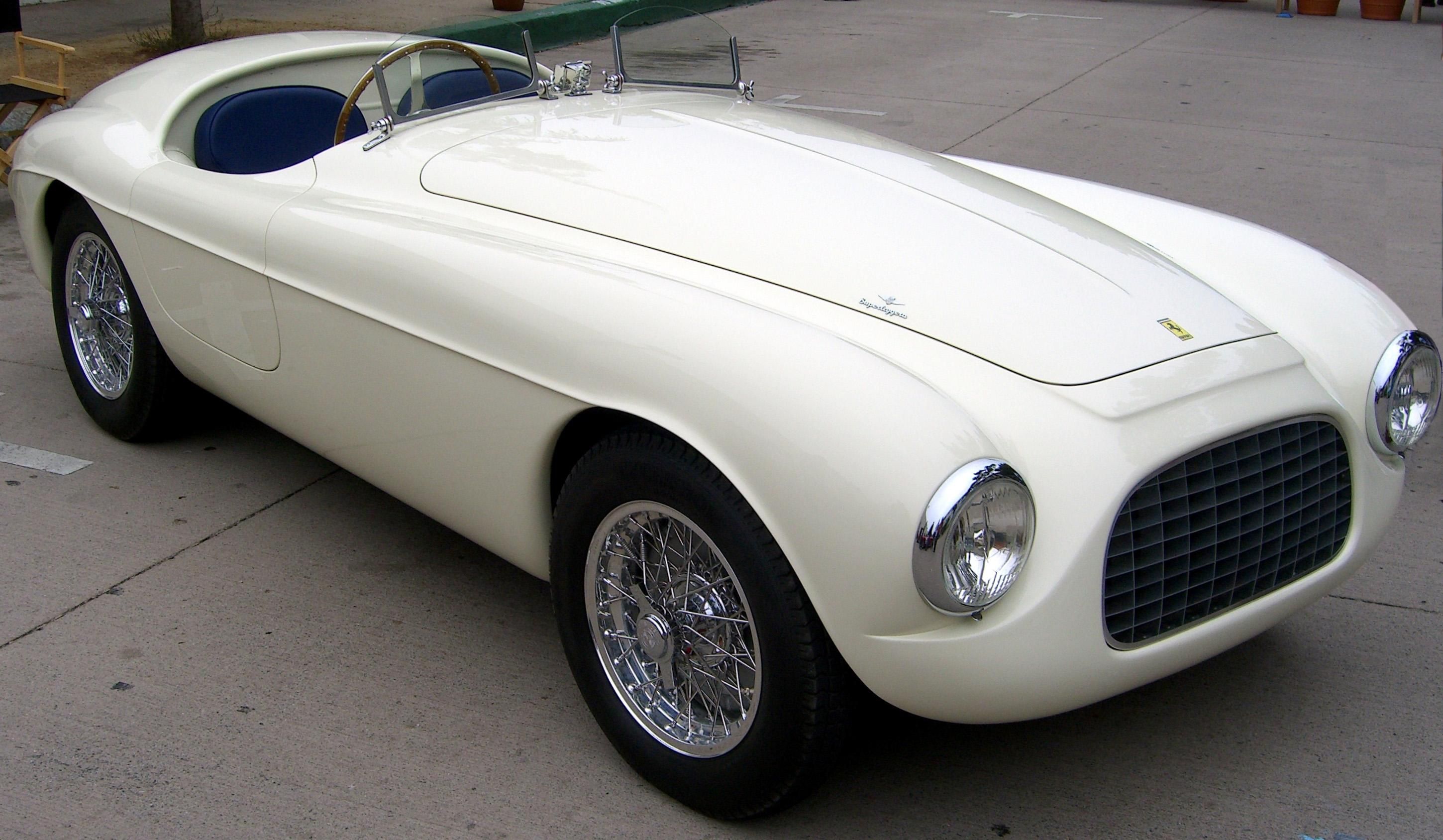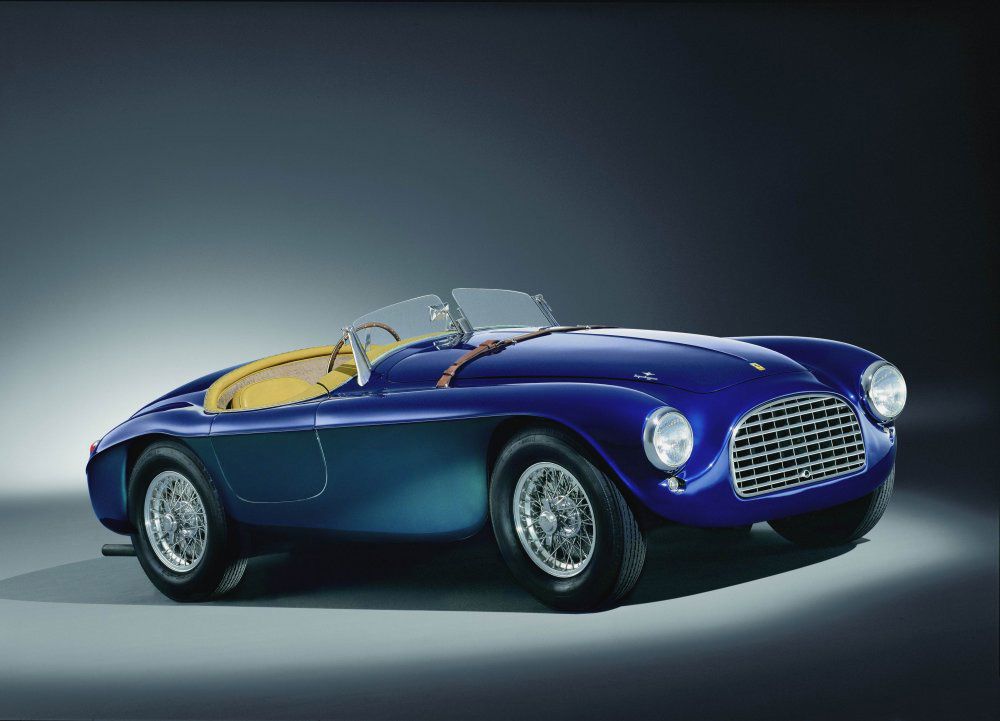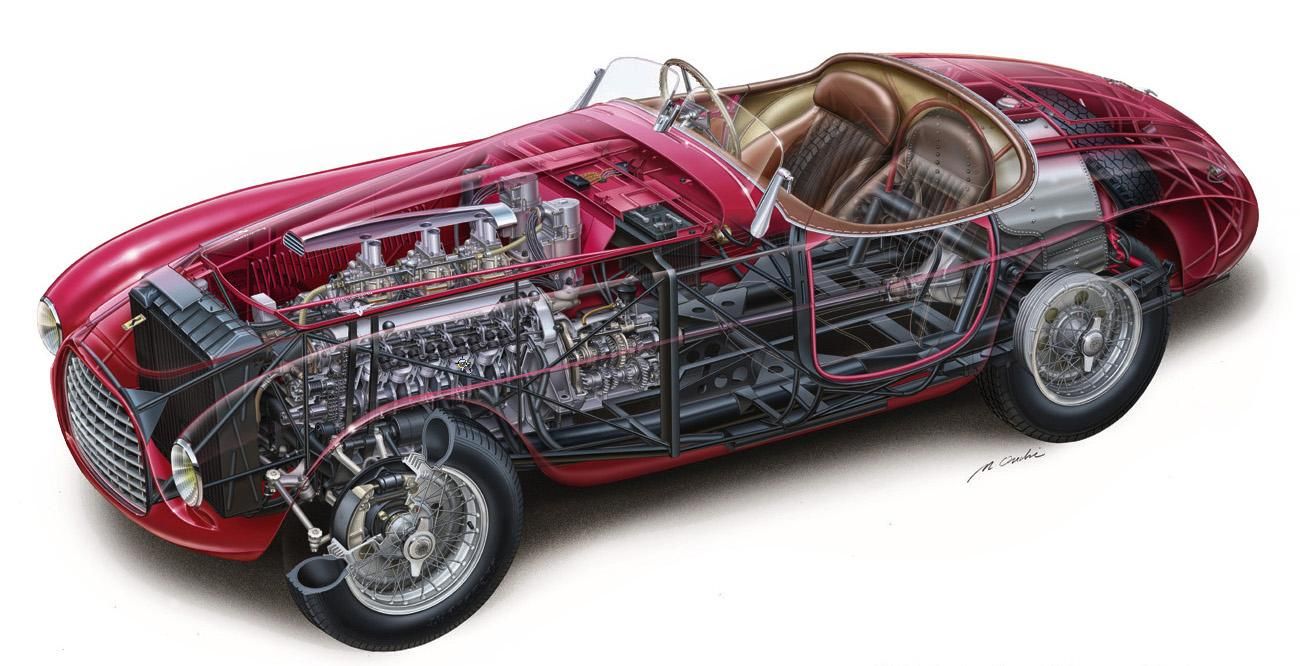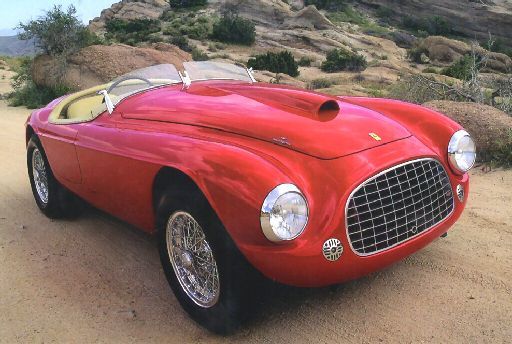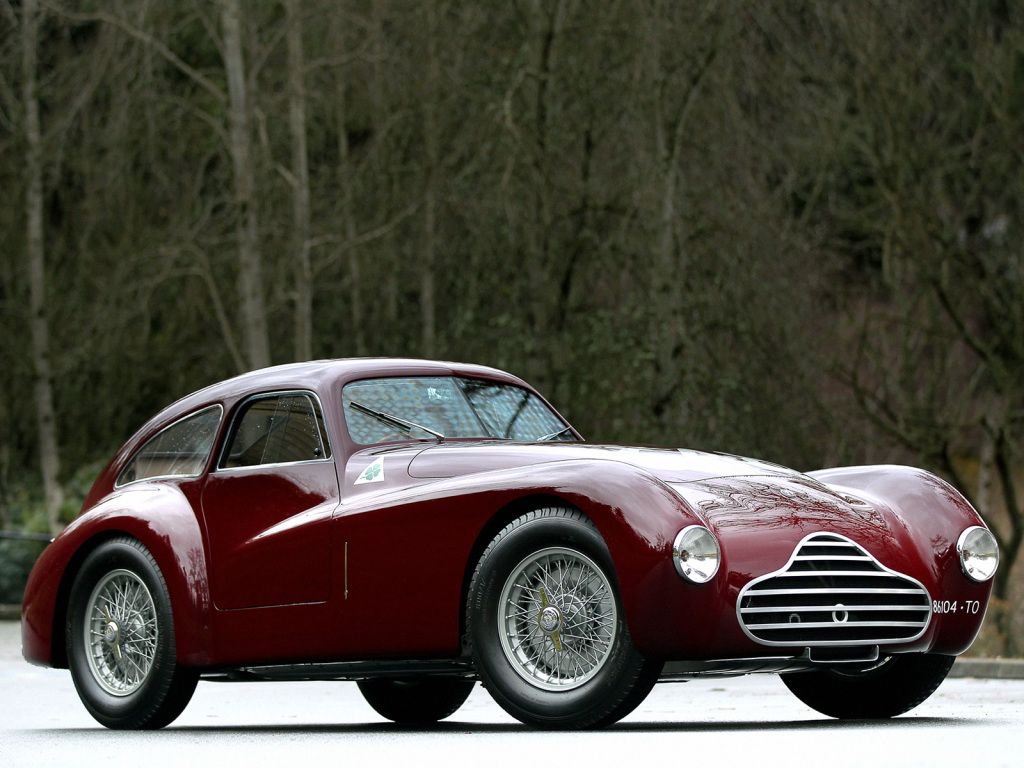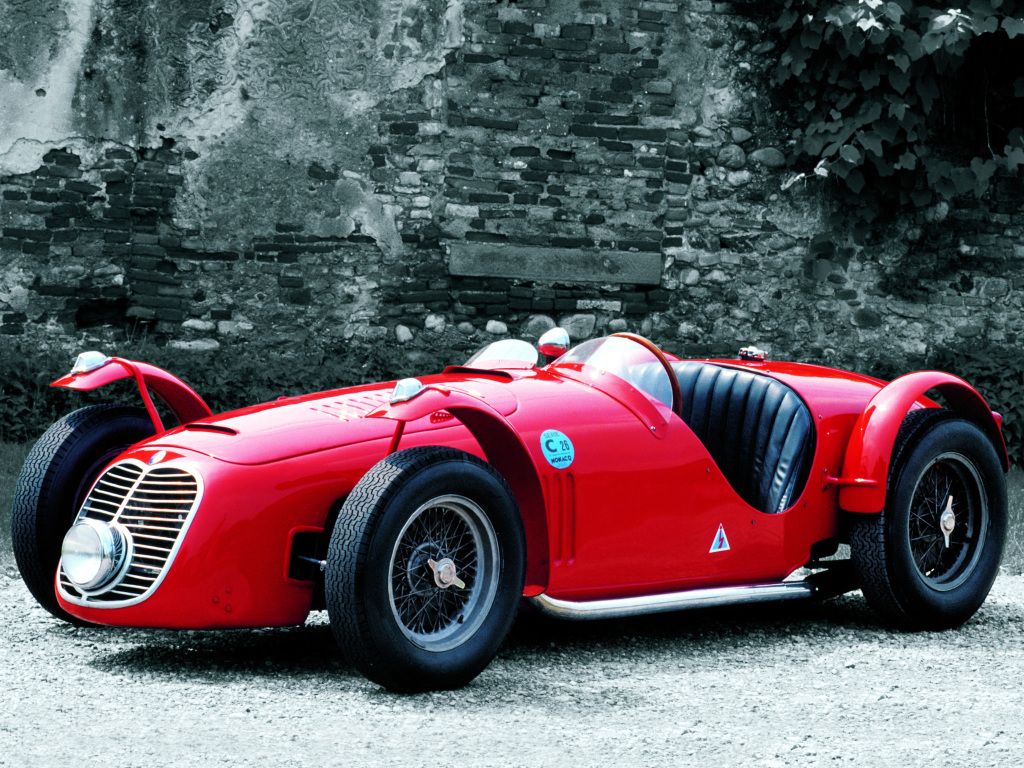It is a matter of some dispute as to which car should be considered the first Ferrari->ke252 production model. While the first road legal car to wear a prancing horse badge was the 125 S, only two of these were ever made, and there was only one 159 S,->ke3508 the car that came after the 125 S.->ke3507 It was only once Ferrari moved from the 159 S to the 166 S->ke3510 that Ferrari's cars became anything more than what we would today consider a prototype. That's not to say that the 166 S was built in particularly large quantities, but it was more than two, and the related 166 MM and 166 Inter were built in even larger quantities still.
Ferrari had been around for some time as a racing team before it ever started building cars of its own. Much of this had to do with Enzo Ferrari's complete inability to get along with other humans, as a nasty split from Alfa Romeo->ke1386 left him without a marque to race for. He started building his own cars after WWII, and the 166 S was the first one to achieve real success in racing,->ke447 thus spawning an actual production run of the car.
Continue reading to learn more about the Ferrari 166 S.
1948 Ferrari 166 S
- Make: Array
- Model: 1948 Ferrari 166 S
- [do not use] Vehicle Model: Array
Exterior
The 166 S doesn't really have any standard bodywork. Just three units were produced, although 9 units of the 166 Spyder Corsa, which is basically the same car, were also produced. All of these had coachwork by Carrozzeria Allemano, and nearly all of them are roofless, although the one hardtop has the distinction of being Ferrari's first car with a closed cabin. The 166 in both S and MM form was essentially a race car, just one that happened to be driven on the street sometimes, because it was 1948 and that was something you could do back then.
The car therefore has a very basic kind of look to it, no ornamentation or trim to speak of, and they would often even have the doors removed when racing. The 166 MM would have coachwork by Carrozzeria Touring, and the 166 Inter, Ferrari's first actual GT car, would have custom coachwork by a variety of coachbuilders, but the styling and body of the S were almost an afterthought.
Interior
Later versions of the 166 would have at least some kind of an attempt at an interior, albeit usually not much of one. But the 166 S was a race car, and even if you were buying it for the street (hypothetically, of course, no one did), there wasn't an interior. There isn't a roof either, in most cases, so at least all of that bare metal on the inside won't get ruined if it gets caught in the rain.
Drivetrain
Ferrari was around for quite a few years before it ever developed a second engine for road cars. In the early days, everything used some variation of the Colombo V-12 engine. In most of the early cars Ferrari built, the number in the model's name refers to the specific displacement of the engine, meaning that the engine in the 166 displaced 166cc per cylinder. Over the twelve cylinders, this adds up to 2.0 liters, quite small for a V-12. With its 7.5:1 compression, the 166 S made 110 horsepower. Later versions of the car, i.e. the 166 MM and the 166 Inter, used a 10:1 compression ratio, and this bumped power up to 140 horsepower. But even 110 horsepower was perfectly respectable for a 2.0-liter engine in 1948, and it was enough for the 166 S to take first place in the 1948 Mille Miglia, at the time probably the most important race to Italian carmakers. This is why, when Ferrari debuted an improved version of the car, it got an “MM” in place of the “S,” a tribute to the Mille Miglia win.
Prices
Prices for the 166 S would be purely theoretical, because there aren't any. Ferrari was too small a company to retire competed cars in 1948, and prototypes were modified to meet the specifications of the new model. The hardtop 166 S became a 166 Inter, and the other two became MM racers. Some Spyder Corsas exist, but your best bet if you want a racing 166 is a 166 MM, which will set you back about $3 million.
Competition
Maserati A6GSC
One of the big advantages that Ferrari enjoyed in its early days was that very few carmakers from former Axis powers was able to bring out a new race car so soon after the war. But Maserati had a new car for 1947, the A6GSC, of which three were built. Although it wasn't built for Formula 1, since that didn't exist at the time, it was later raced by Maria Theresa de Filippis, the first female F1 driver.
Alfa Romeo 6C 2500 Competizione
The 6C is a model that dates back to 1930, but it got a number of updates along the way and manages to stay surprisingly relevant even two decades later. In fact, it was a 6C that won the Targa Florio in 1950, after two consecutive wins from 166s, with Alfa retaking its crown for the first time since the war.
Competition
The 166 was where Ferrari began to change as a company. It had existed as a racing team since 1925, and had even built a few race cars before the 166, but the 166 was the first Ferrari to exist in non-racing form. The 166 S was essentially a prototype version of the 166 MM/Inter, that last step before Ferrari nailed down something that could be turned into a road car. It was an important step, making it all the more unfortunate that none survive, at least not in their original form.


